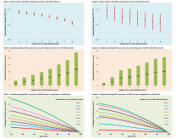Pharmageek

Cancer causes one in four premature deaths in OECD countries. It damages people’s quality of life, their ability to work, and their incomes. Cancer increases health expenditure and harms the economy through reduced labour force participation and productivity. The economic and social costs of cancer will grow as populations age and cancer treatment costs increase. This report demonstrates the strong economic and societal case for investing in cancer policies. Microsimulation modelling for 51 countries (including OECD, European Union and G20 countries), shows that stronger action on cancer would yield broad benefits. If all countries did as well as the best performing country in cancer care, a quarter of premature cancer deaths would be prevented. Addressing key cancer risk factors – including tobacco, harmful alcohol use, unhealthy diet, air pollution, overweight and physical inactivity – would lower cancer rates and health expenditure, while also increasing workforce productivity. Co-benefits of such policies include improving road safety and reducing greenhouse gas emissions. Vaccination for human papillomavirus will protect future generations from cervical cancer.
Lire l'article complet sur : www.oecd.org

La prévention a un impact majeur sur la réduction de la mortalité et de la morbidité évitables, compte tenu de l’incidence des facteurs liés au comportement sur la santé.
Lire l'article complet sur : igas.gouv.fr
$post.getHtmlFragment()
The combined burden of underweight and obesity has increased in most countries, driven
by an increase in obesity, while underweight and thinness remain prevalent in south
Asia and parts of Africa. A healthy nutrition transition that enhances access to nutritious
foods is needed to address the remaining burden of underweight while curbing and reversing
the increase in obesity.
Lire l'article complet sur : www.thelancet.com
Lire l'article complet sur : www.thelancet.com
Lifestyle medicine has been proposed as a way to address the root causes of chronic disease and their associated health care costs.This study aimed to…
Lire l'article complet sur : www.sciencedirect.com




